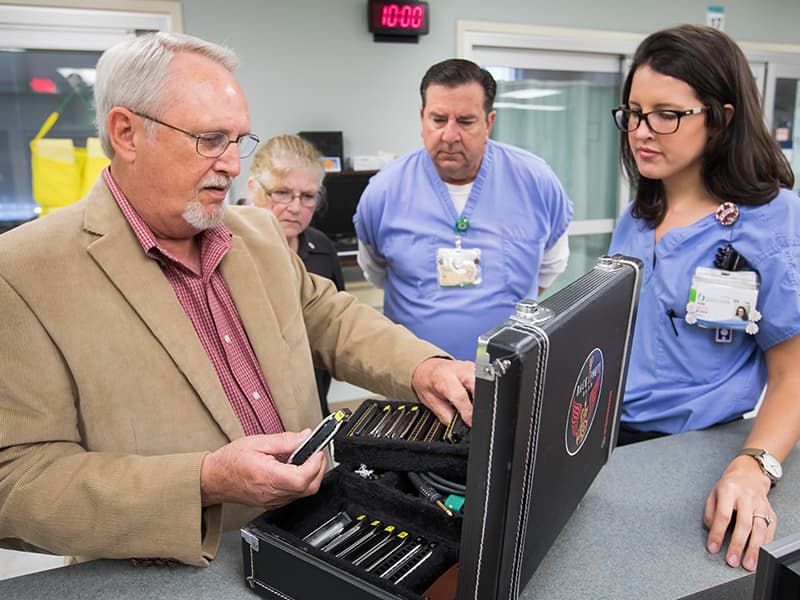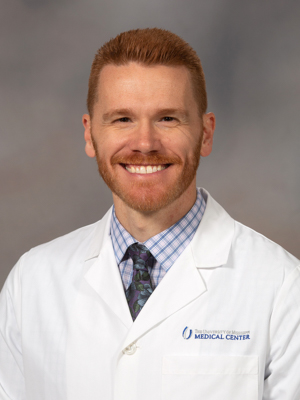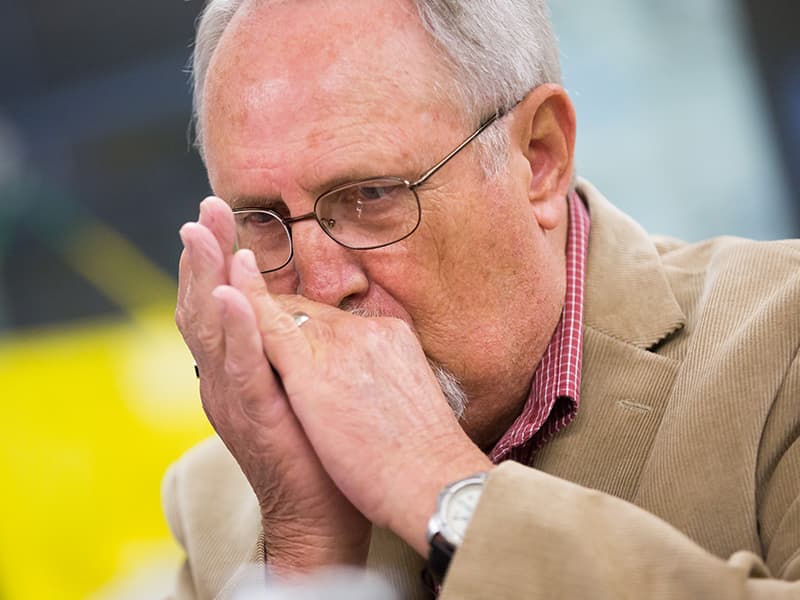Screening, early detection make lung cancer ‘highly curable’

David Bowman attributes his current cancer-free life to doctors who care, skilled surgeons and a lung cancer screening tool approved three years before his diagnosis.
Today, at 66, the University of Mississippi Medical Center patient encourages others who qualify to have low-dose CT screening, also referred to as LDCT for low-dose computed tomography, the tool that helped identify a growing nodule in his lung in time to remove it surgically without the need for chemotherapy or radiation therapy.
“Do it. You’ve got nothing to lose and everything to gain,” he said. “You could end up like me and be blessed with early detection. By the time symptoms show up, it’s too late to get the results I have.”
His surgeon, Dr. Jacob Moremen, agrees. “He found a highly curable lung cancer at a time when he was well enough to undergo that cure.

“Lung cancer is the number one cancer killer in America largely because we don’t have a good screening program,” said Moremen, assistant professor of surgery and a member of the Interdisciplinary Thoracic Team at UMMC’s Cancer Institute. “Breast, colon and cervical cancers all saw a marked decline in deaths after screening began.”
According to the Mississippi Cancer Registry, 2,575 people were diagnosed with lung and bronchus cancer in this state in 2014, the latest year for which verified figures are available, and 1,943 died of it.
Moremen said the screening has another effect on many people: they quit smoking. Smoking is the overwhelming major risk factor for lung cancer.
“A lot of people have a hard time with the reality of lung cancer because they can’t see it, can’t feel it,” he said. “Something more tangible helps.”
Dr. John Ruckdeschel, Cancer Institute director and an internationally recognized lung cancer expert, said it took decades of study to find a reliable test that reduced lung cancer mortality. The National Lung Screening Trials reported results of that research in 2011.
“The data is clear that we can reduce lung cancer mortality by 20 percent, far above what we can do with most of our therapies,” he said. “The downside is there are a lot of scans that find benign nodules and safely sorting them out is why we need careful review by an interdisciplinary team.”
Bowman, of Pelahatchie, said his experience with LDCT began in January, 2015 when his family doctor, Dr. Christopher Boston, associate professor of family medicine, suggested it.

He had smoked for 40 years before quitting in 2011. “Just before my 60th birthday I quit for the last time,” he said. “I’m out on the porch drinking wine and talking to the cigarette, telling it how much I love them and how much I hate them and they’re not going to control me anymore.”
Boston, who knew he was a long time smoker, recommended the screening, which then cost $150. “I paid my $150 and got my full scan,” Bowman said. “It took five minutes. A day or two later they called and said they found a nodule but wanted to watch it for now.”
He continued with scans in July, 2015 and January and July, 2016, with no change. He and his doctors decided to wait a year. “By now I’m out $450, but Medicare began paying for it in July, 2016.” In July 2017, the nodule had grown.
Bowman saw the Interdisciplinary Thoracic Team, where members arranged a PET scan and biopsy. Since the cancer was small, surgery was the only treatment he needed.
“Surgery was not as bad as I thought it would be,” he said. “I hope I’m as healthy as Dr. Moremen thinks I am. I haven’t taken good care of my body until the last six years.”
Bowman was a good patient, Moremen said. “Our success rates are very good with early stage lung cancer,” he said.
Early stage lung cancers have no or few symptoms. Nodules detected in the LDCT scans are reviewed by radiologists. Those that raise concerns, like Bowman’s, are referred to the team. The team, with surgeons, medical and radiation oncologists, radiologists, pathologists, pulmonologists and others, review cases each week, debating the best course of treatment for each new patient.
“In the case of a small nodule like his, it usually will come to us (surgeons) unless they’re really unhealthy,” Moremen said. The team concept the Cancer Institute uses means the specialists can set up appointments for the patient, in the correct order, and often for the same day.
“A lot of places don’t run that way, patients get pinged round to six different appointments to doctors who aren’t talking to each other and the patient knows it,” Moremen said. With the team approach, patients also have the assurance no one is making a recommendation in a vacuum, he said.

Life after cancer is good, but not the same. Bowman, who retired in 2003 as a chief master sergeant with the Mississippi Air National Guard after 32 years, remarried about 18 months ago. The man, who once played drums in area bands, now prefers the cross harp, a blues style harmonica.
He’s back to playing with the Back Forty Band but with a few changes. “My voice is not as good as it was, but I can still carry a tune. I have to look for places that don’t allow smoking now.”
Together, he and wife, Jessie, enjoy their garden, grilling, cooking and traveling the country in their RV.
The U.S. Preventive Services Task Force recommends low-dose CT screening for:
- Adults with a history of smoking (30 pack-year smoking history: 1 pack a day for 30 years, 2 packs a day for 15 years, etc).
- Are ages 55 to 77.
- Who currently smoke or who have quit within the past 15 years.
Individuals who think they are candidates for this screening should discuss it with their doctor.
More on lung cancer screenings: UMMC Screening page.
Ready to quit smoking. Get help at the ACT Center for Tobacco Treatment, Education and Research.


